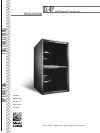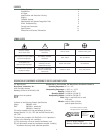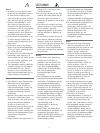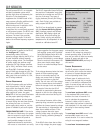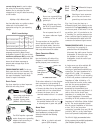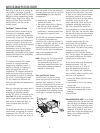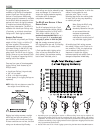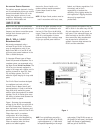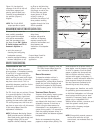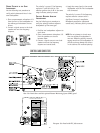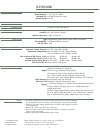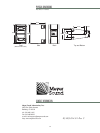
6
AMPLIFICATION AND PROTECTION CIRCUITRY
Each driver in the DS-4P is powered by
one channel of the Meyer Sound MP-
2/DS-4P, a 1240W RMS amplifier (620W
RMS/ch) utilizing complementary power
MOSFET output stages (class AB/H). The
following sections discuss the MP-2’s
limiting circuitry and the two-fan
cooling system.
TRUPOWER™ LIMITING SYSTEM
Conventional limiters assume that the
resistance of a loudspeaker remains
constant and set the limiting threshold
by measuring voltage only. This method
is inaccurate because the loudspeaker’s
resistance changes in response to the
frequency content of the source material
and thermal variations in the
loudspeaker’s voice coil and magnet.
Conventional limiters begin limiting
prematurely, which under-utilizes system
headroom and deprives the loudspeaker
of its full dynamic range.
The TruPower limiting (TPL) system
accounts for varying loudspeaker
impedance by measuring current, in
addition to voltage, to compute the
power dissipation and voice coil
temperature. TPL improves performance
before and during limiting by allowing
the loudspeaker to produce its maximum
SPL across its entire frequency range.
TPL also extends the lifetime of the
drivers by controlling the temperature of
the voice coil.
When the safe continuous power level is
exceeded, a single limiter engages,
affecting both amplifier channels
equally. TPL activity is indicated by the
Low Limit LED on the user panel. The
limiter ceases operation when the power
level returns to normal and does not
affect the signal when the LED is
inactive.
The DS-4P performs within its acoustical
specifications and operates at a normal
temperature if the TPL LED is on for no
longer than two seconds, and off for at
least one second. If the LED remains on
for longer than three seconds, the DS-4P
is hard limiting with these negative
consequences:
• Increasing the input level will not
increase the volume.
• The system distorts due to clipping
and nonlinear driver operation.
• The life-span of driver and amplifier
components is reduced because they
are subjected to excessive heat.
The TPL LED can indicate an imbalance
in a system of loudspeakers by
functioning like a spectrum analyzer. If
drivers in a subwoofer, mid-bass, or mid-
hi subsystem begin to limit before
reaching the required operating level for
the entire system, then that subsystem
needs to be supplemented with
additional loudspeakers.
NOTE: Although the TPL limiters exhibit
smooth sonic characteristics, we do
not recommend using them for
intentional compression effects. Use
an outboard compressor/limiter to
compress a mixed signal.
FANS AND COOLING SYSTEM
The DS-4P uses a forced-air cooling
system with two fans to prevent the
amplifiers from overheating. The fans
draw air in through ducts on the front of
the cabinet, over the heatsinks, and out
the rear of the cabinet. Since dust does
not accumulate in the amplifier circuitry,
its life-span is increased significantly.
A foam insert filter, in combination with
the entire front grill surface, acts as an
air filter for the cooling system. Despite
the filtering, extensive use or a dusty
operating environment can allow dust to
accumulate along the path of the
airflow, preventing normal cooling. We
recommend periodically removing the
grill, filter, and amplifier module and
using compressed air to clear dust from
the grill, filter, fans, and heatsinks. Make
sure that the air ducts are clear and that
there is at least six inches clearance for
exhaust behind the cabinet.
A variable-speed primary fan runs
continuously with an inaudible
operating noise of 22 dBA at 1 m at its
slowest speed. The speed of the primary
fan begins increasing when the
temperature of the heatsinks reaches
42°C. The fan reaches full speed at 62°C
and is barely audible near the cabinet,
even without an audio signal.
In the unusual event that the heatsink
temperature reaches 74°C, the
secondary fan turns on; it turns off
when the temperature decreases to
68°C. The secondary fan is audible at
close proximity without an audio signal
and turns on in response to
• primary fan failure (check its status
immediately);
• accumulation of dust in the cooling
system path;
• a prolonged period of high source
levels in hot temperatures or direct
sunlight;
• driver failure.
TROUBLESHOOTING NOTE: In the highly
unlikely event that the secondary fan
does not keep the temperature below
85°C, the DS-4P automatically shuts
down until AC power is removed and
reapplied. If the DS-4P shuts down
again after cooling and reapplying AC
power, contact Meyer Sound for
repair information.



